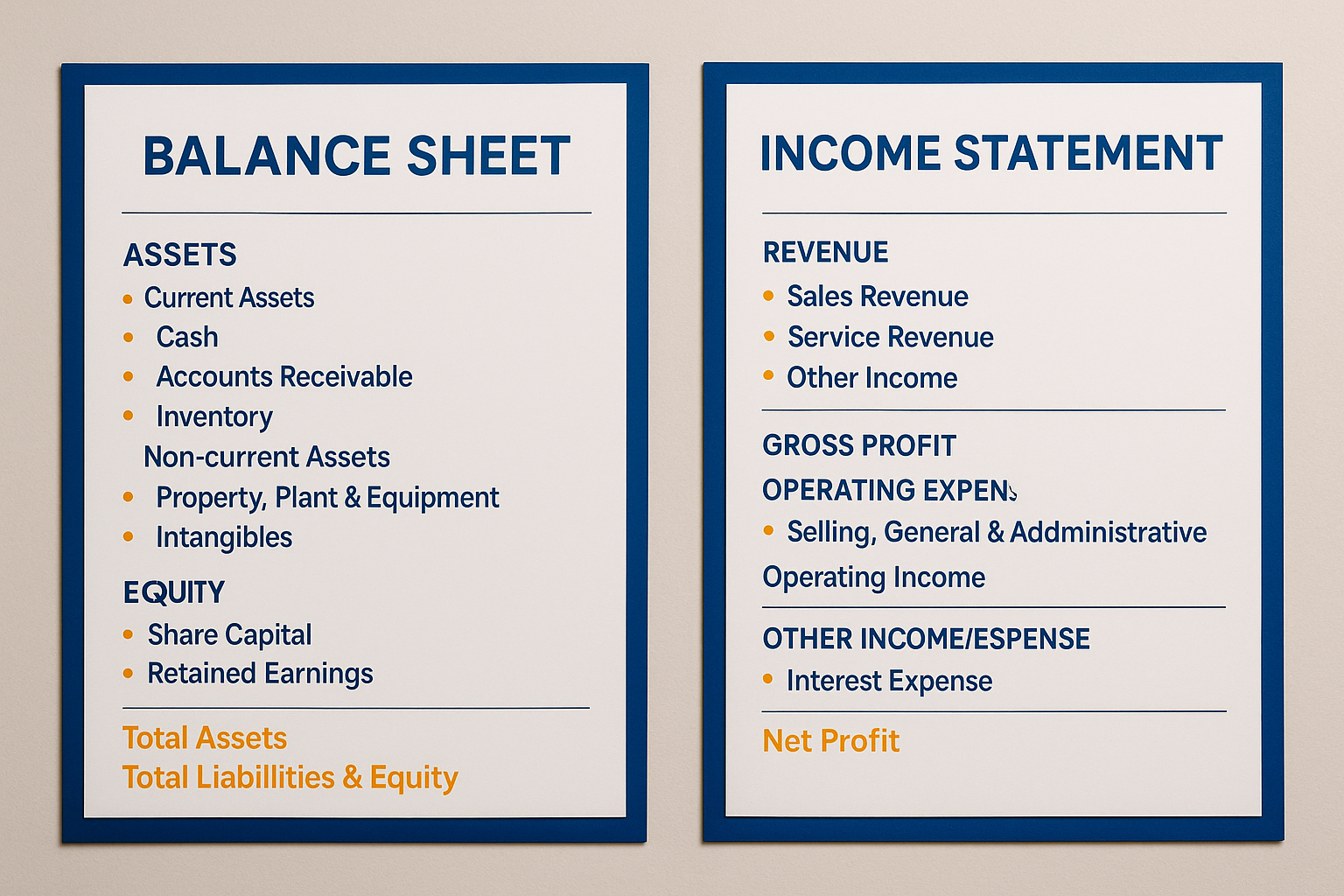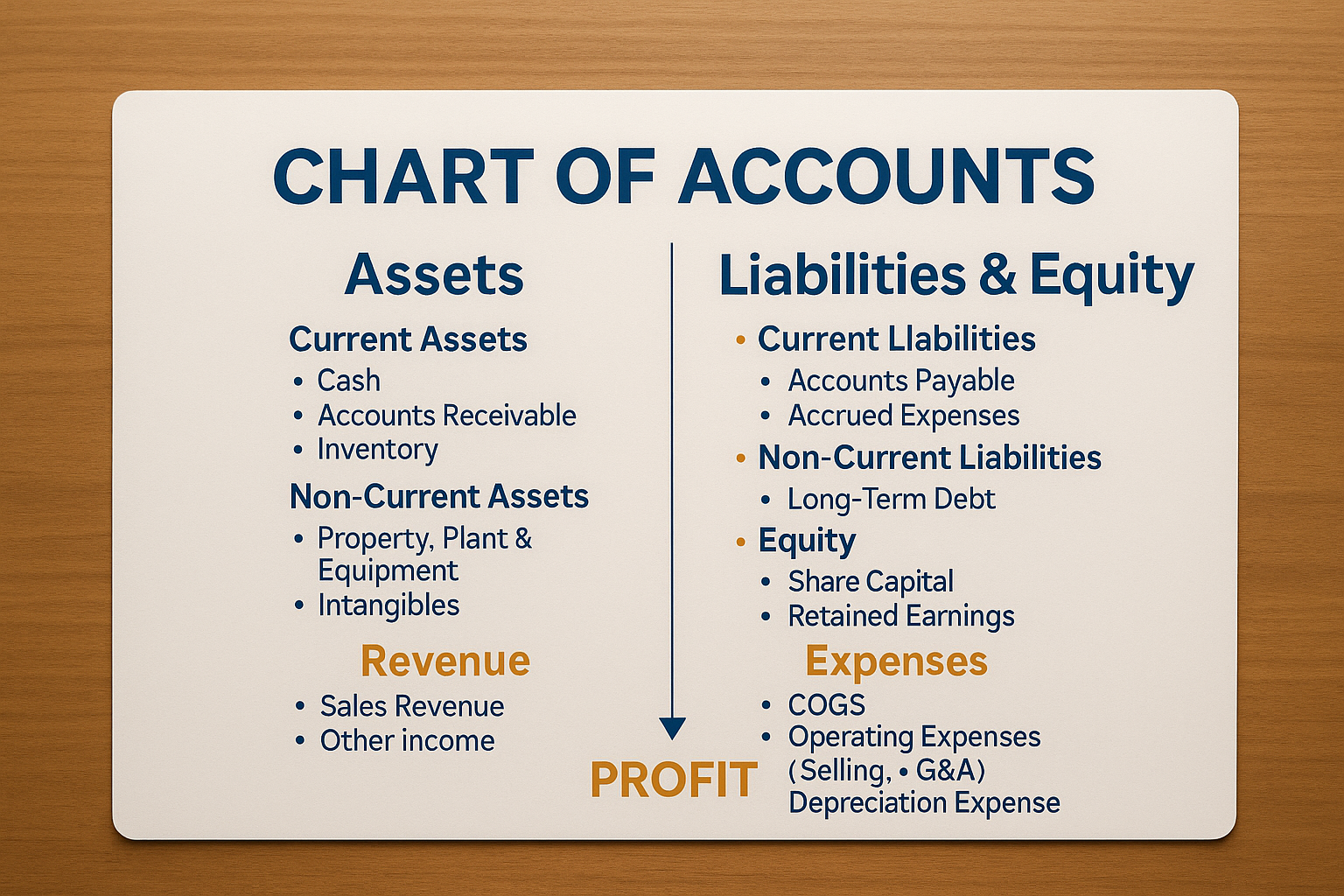In the world of accounting, the chart of accounts is the cornerstone for organizing and classifying all financial accounts for any organization. It is not just a list of accounts, but a comprehensive framework used to systematically record and classify all financial transactions.
Understanding the chart of accounts is essential for both accountants and business owners, as it ensures the accuracy of financial records and ease of reporting. In this article, we explain what a chart of accounts is, its importance, the main types of accounts it includes, and best practices for designing it.

What is a chart of accounts?
A chart of accounts is an organized list of all the accounts a company uses to record its financial transactions. It is used in journals and ledgers and forms the backbone of any accounting system.
Each account in the tree is given a unique number and functional classification (such as assets, revenues, expenses), which facilitates tracking and analysis.
Components of the chart of accounts
The chart of accounts usually consists of five main types:
Assets: such as cash, accounts receivable, inventory.
Liabilities: such as loans, creditors, short-term obligations.
Equity: such as capital, retained earnings.
Revenue: such as sales, income from services.
Expenses: such as salaries, rent, administrative expenses.
Each main type contains sub-classifications according to the nature of the company's business.
A simplified example of an account tree
Account number
Account name
Main type
1000
Cash
Assets
1100
Customer accounts
Assets
2000
Creditors
Liabilities
3000
Capital
Equity
4000
Product sales
Revenue
5000
Salary expenses
Expenses
The importance of the chart of accounts in accounting
Simplifies accounting records
Speeds up the preparation of financial statements
Achieves accuracy and clarity in classification
Supports financial review and auditing
Enables tracking of financial performance by department or activity

How to design an effective chart of accounts
Start with the main structure: identify the main accounts (assets, liabilities, etc.).
Assign numbers to accounts: use logical numbering (e.g., 1 for assets, 2 for liabilities, etc.).
Classify accounts by activity: Assign sub-accounts to each unit or project.
Avoid duplication: There should be no duplicate or unclear accounts.
Regular updates: Update the tree according to changes in business activity.
The difference between the chart of accounts and the account manual
Comparison
Chart of accounts
Account manual
Definition
A classified structure of accounts within the system
A booklet or file explaining the details of each account
Use
In electronic accounting programs
A documentary reference for accountants
Includes description
No (only numbers and names)
Yes (account definition, nature, use)
Practical tips for managing the account tree
Keep it simple at first, and expand later as needed
Review the tree periodically as the business evolves
Monitor accounts that are not used regularly to reduce or consolidate them
Use logical numbering that reflects the structural sequence
Assign sub-accounts to departments or projects to facilitate tracking
Conclusion
The chart of accounts is not just a static list, but the infrastructure your company relies on to record, analyze, and understand its financial operations. Whether you are starting a business or running an existing company, designing a structured and clear chart of accounts will give you better control over your financial performance.
With solutions like Wazen, you can set up a flexible and integrated chart of accounts that supports your business growth and gives you accurate financial analysis at every moment.
Start building your chart of accounts with Wazen today—and take a step toward more professional financial management.